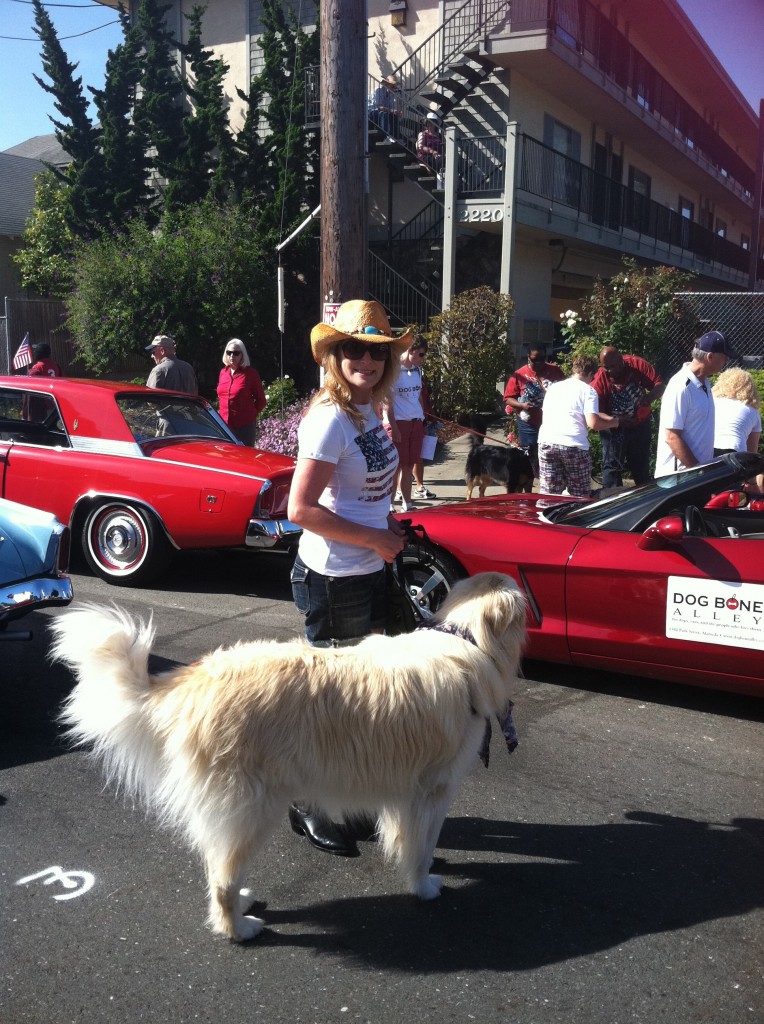Two years ago our dog (Dillon) and I marched in our local parade on the Fourth of July. It was super exciting to be part of the celebration honoring the birth of our country and the people who fought for our freedom. Our sweet Dillon went on to be in Heaven a little over a year later. I will always be grateful for the memory of that special Fourth of July I shared with Dillon and the rest of our town.
However, I have a confession to make. There’s another reason I had agreed to do it. I wanted the exercise. It seemed like such a great way to get my workout in for the morning and celebrate at the same time.
One of my secrets to weight management without dieting is to get exercise on days I will be indulging. I don’t use this method only on the Fourth of July — I practice this principle all summer long!
Here are a few simple tips to help you enjoy your holiday without worrying about weight gain:
1) Exercise. If you are walking in your local parade, this is a great way to get exercise. Committing to an event will help keep you on track when you might be tempted to “blow off” exercise.
You don’t have to be in a parade to get exercise on the fourth. You and your family and/or group could walk or hike before all of the grilling starts. Try calling to set it up in advance. If it’s too tough to fit in — plan fun, active games. You can have a blast and help prevent the mindless snacking that can occur while visiting.
2) Go Light. Having a potluck? Bring the lighter version of your traditional dish. Something as simple as substituting regular mayonnaise with the light version can cut back significantly on calories! Google is great for helping you find the lighter fare without compromising taste. Ask other friends if they want to bring light dishes as well. If appropriate, why not make “cooking light” the theme?
Choose leaner meats for the barbecue. A Kielbasa sausage has 330 calories. That doesn’t include the bun. Substitute with a chicken sausage that has 170 calories.
3) Make calorie conscious choices. Enjoy the spread, however limit foods like chips and dip. A couple handfuls of chips and two tablespoons of dip is usually a serving and can have 200 calories easy! Load up on fruits, veggies, and green salad. Take smaller “taste size” portions of the heavier dishes like potato salad. This allows you to keep from feeling deprived and stay on target with your weight loss/management goals.
Substitute sparkling water or plain iced tea for sweet tea, energy drinks, and soda. Wine and beer have a lot less calories than blended “umbrella” drinks. If you plan on drinking some of your calories, you may want to skip dessert or vice versa.
Make a plan before the party starts. For example if the tea is sweet, I”ll choose water.
4) It’s only one day. You have to really pig out to gain weight in one day. However, the fourth can set the tone for the rest of the weekend and even the summer. If you overdo it, get right back on your normal eating and exercise plan the following day. It may take some self control, but you’ll feel better in the long run.
Have a super fun and safe Fourth of July! Go out and create amazing memories with the ones you love that you will cherish forever.
God bless you and America!
Jennifer



